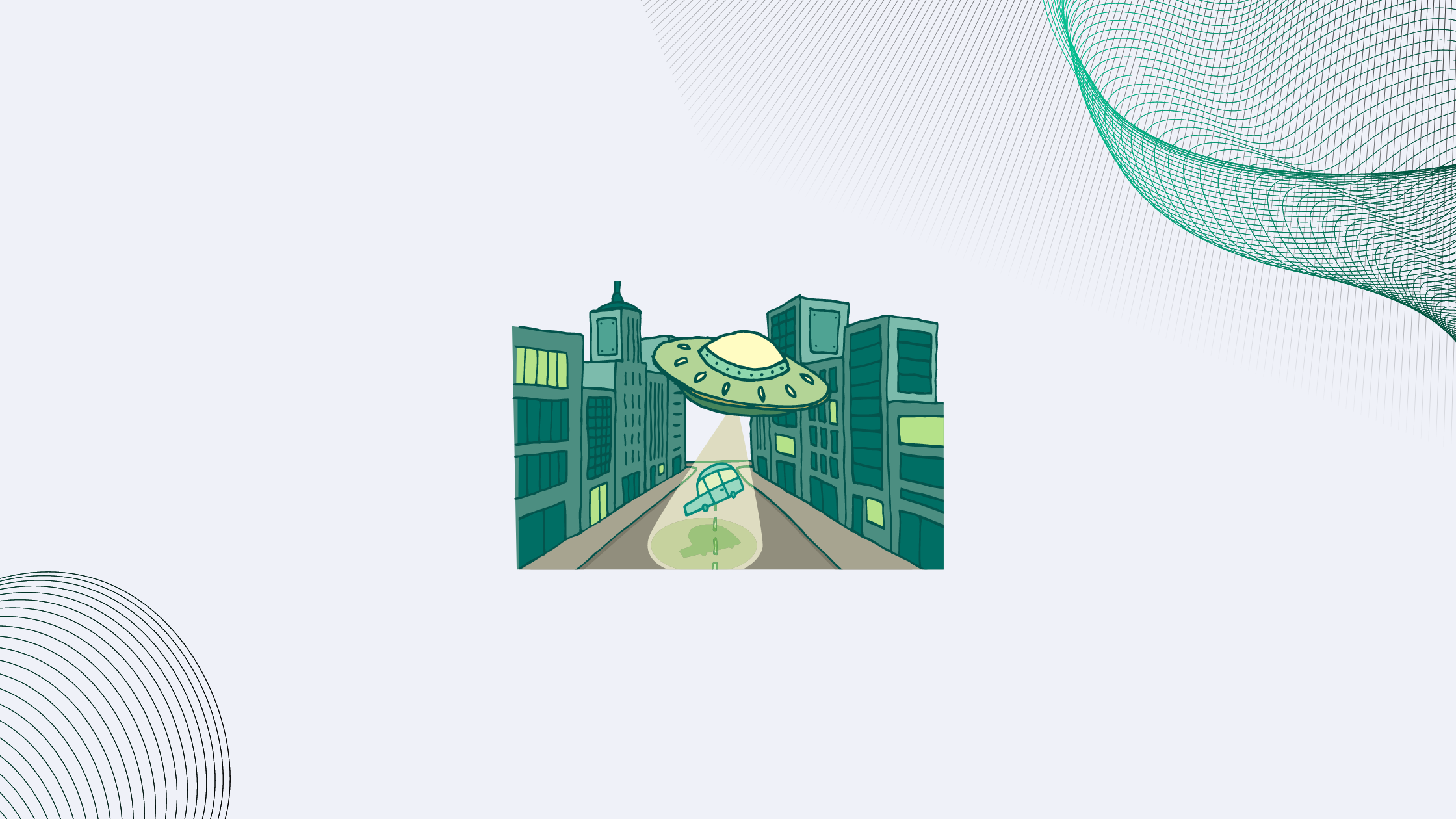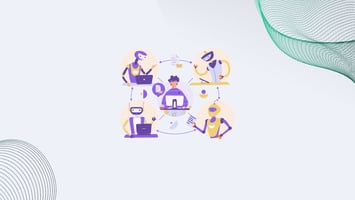Expanding the Space of Ideas: How AI Can Accelerate Innovation in Associations Innovation is the...
Unleashing Creativity with AI Generated Sci-Fi Stories
From Science Fiction to Reality
Science fiction has long been a wellspring of inspiration for innovators and dreamers. From Jules Verne's submarines to Star Trek's communicators, the genre has a proven track record of imagining technologies that eventually become reality. Now, artificial intelligence is opening up new possibilities for harnessing this creative power in practical, actionable ways.
Thomas Altman, Chief Innovation Officer at Betty, is exploring how we can use AI to increase creativity and innovation through an unlikely pairing: AI-generated science fiction narratives. This approach isn't just about product development; it's about revolutionizing the very process of ideation across various work functions.
At its core, this method taps into a fundamental truth: the stories we tell shape the futures we build. By leveraging AI to generate science fiction narratives, we can unlock a wealth of creative possibilities that might never emerge through traditional brainstorming methods. This technique allows teams to rapidly explore diverse scenarios, pushing the boundaries of what's possible and translating fantastical concepts into tangible ideas and prototypes.
In this blog post, we'll delve into how AI-driven sci-fi storytelling can dramatically increase creativity in brainstorming, leading to greater outcomes across a wide range of industries and functions. From marketing campaigns to organizational strategies, from product innovation to problem-solving, this approach offers a new paradigm for ideation that could reshape how we approach challenges and opportunities in the modern world.
Breaking Free from Conventional Brainstorming
Before we explore the exciting possibilities of AI-generated sci-fi, it's important to understand the limitations of traditional brainstorming and ideation processes:
- Challenges in brainstorming and ideation: Traditional brainstorming sessions often suffer from a range of issues. Groupthink can lead teams to converge on "safe" ideas too quickly. Fear of judgment might prevent team members from sharing their most innovative – and potentially risky – concepts. And the loudest voices in the room can dominate, drowning out quieter but potentially brilliant contributions.
- Limitations of conventional approaches: Even when these social dynamics are managed well, conventional approaches to ideation are inherently limited by human cognitive biases and the collective knowledge and experiences of the team. We tend to anchor our thinking in what we already know, making it difficult to truly think "outside the box."
These limitations point to a clear need: a way to break free from our mental constraints and explore truly novel territory. This is where the combination of AI and science fiction storytelling comes into play, offering a paradigm shift in how we approach the creative process.
Understanding AI as a Creative Partner
To grasp the potential of AI in creative processes, it's crucial to understand how these systems work and think. At its core, an AI like ChatGPT functions as a sophisticated "next word predictor." As Thomas Altman explains, it's trained on vast amounts of text data, learning patterns and relationships between words and ideas. When given a prompt, it uses this learning to predict the most likely next words or ideas, creating coherent and often creative text.
What makes AI particularly powerful for creative tasks is its ability to make connections between disparate concepts. It can draw from a vast pool of information, making associations that might not occur to a human mind constrained by individual experience and knowledge.
This ability to rapidly generate and connect ideas allows AI to explore vast "idea spaces" quickly. It can produce numerous variations on a theme, explore unlikely combinations, and generate scenarios that push the boundaries of what we might typically consider possible.
By leveraging these capabilities and guiding them through the lens of science fiction, we can tap into a wellspring of creativity that goes beyond conventional brainstorming techniques.
Thank you for your detailed feedback. I'll revise the section based on your comments. Here's the updated version:
The Sci-Fi Storytelling Technique
Science fiction has always been a powerful medium for exploring potential futures and pushing the boundaries of what's possible. It allows us to imagine new technologies, societies, and scenarios without the constraints of current reality. This makes it an ideal tool for innovation, as it encourages us to think beyond our current limitations and envision radical new possibilities. By adding AI to this equation, we can supercharge this creative process, generating and exploring countless scenarios at unprecedented speed.
Step-by-step process of using ChatGPT for sci-fi narratives:
- Setting the context and parameters: Begin by providing ChatGPT with a prompt that sets the stage for creative exploration and introduces your end goal. For example, if we were trying to build an AI tool like Betty Bot, we might start with a prompt like this: "Adopt the role of a Hugo Award winning sci-fi writer. (Hugo Awards are like the Oscars of sci-fi.) You're working on your next concept, it's motivated by a company called Betty Bot, an AI-powered intelligent assistant for associations. Conduct web research to find ideas for this story."
- Generating multiple story ideas: Under ChatGPT's response, you will see a button with two arrows in a circle. This is the 'regenerate' button. By clicking on this, you give ChatGPT instruction to create a second version of its response to the last prompt. These outputs can be thought of as branches in a tree of possibilities. You can click regenerate as many times as you want, adding more and more branches to your tree of ideas. After ChatGPT creates a new version of the response, you can toggle between them using the arrows under the message (you'll see something like <1/2> or <2/3>). Each regeneration creates a new branch in your tree, allowing you to explore a variety of potential ideas, solutions, or angles rapidly. This approach enables you to systematically and deliberately explore the space of ideas, pushing into new territories with each iteration.
- Deepening the exploration: Within each conversation branch, you can add additional instructions to continue the ideation process. Your next prompt might be something like "Using the ideas from your research, outline the narrative for an engaging sci-fi story." This allows you to delve deeper into promising concepts and generate more detailed scenarios.
- Transitioning to actionable ideas: The goal is not to write a sci-fi novel but to explore the space of ideas using narrative. Instead of just saying, "Hey, solve this problem for me," by starting with the sci-fi prompt, you're expanding the boundaries of what's possible. This approach encourages ChatGPT to think more creatively and unconventionally, as Thomas puts it, to "get weird." The result is a more comprehensive and innovative exploration of potential solutions. From here, you can start to extract the most promising concepts and apply them to your actual work challenge.
Benefits of the Sci-Fi AI Approach
The use of AI-generated sci-fi narratives in the ideation process offers several significant advantages. First, it allows teams to explore a much wider range of ideas than traditional brainstorming methods. By removing the constraints of current reality, this approach encourages truly innovative thinking. Additionally, AI doesn't suffer from the same cognitive biases that humans do. It can make unexpected connections and suggest ideas that might never occur to human team members, helping to overcome limitations in our thinking.
Another important benefit is the speed at which AI can generate and iterate on ideas, which dramatically accelerates the innovation process. Teams can explore hundreds of potential solutions in the time it might take to conduct a single traditional brainstorming session.
Finally, this approach levels the playing field, democratizing the innovation process. It allows anyone with access to AI tools to engage in high-level ideation, not just those with technical expertise or extensive industry knowledge. This combination of broadened possibilities, reduced bias, accelerated processes, and increased accessibility makes the sci-fi AI approach a powerful tool for modern innovation.
The Future of AI-Driven Innovation
The combination of AI and science fiction storytelling offers a powerful new approach to innovation, allowing us to explore ideas more broadly and rapidly than ever before. As AI technology advances, we can expect its role in creative processes to grow and evolve. This synergy of AI and human creativity could lead to unprecedented levels of innovation across various fields.
As we become more adept at leveraging AI for creative tasks, we may see a shift in how innovation teams are structured and operate. The ability to effectively collaborate with AI could become a crucial skill in many professions.
We encourage you to try this technique and share your experiences with us! Start with a simple problem and see where AI-generated sci-fi narratives might take you.
*This blog was written with the kind help of Claude 3.5 Sonnet and is based on ideas presented by Thomas Altman, Betty Bot's Chief Innovation Officer, at the Blue Cypress Innovation Hub in Chicago.
.png?width=173&height=70&name=Betty_RGB%201%20(1).png)



